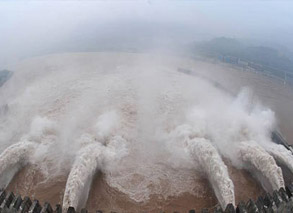Q & A: What is China doing to reduce greenhouse gas emissions?
2009-09-23 18:08 BJT
BEIJING, Sept. 23 (Xinhua) -- Chinese President Hu Jintao on Tuesday told a United Nations climate summit China would cut carbon dioxide emissions per unit of Gross Domestic Product (GDP) by "a notable margin" in the decade to 2020.
It is not the first time China has put forward actions to combat the challenges climate change poses to the world. So what is China doing to reduce greenhouse gas emissions?
Recent moves are:
-- Restructuring the economy: China is pushing forward restructuring its economy by cutting down on high-energy cost and high-emissions projects, and by the elimination of backward capacity in electricity, steel, glass and industries.
From 2006 to 2008, the country eliminated backward smelting capacity of 61 million tonnes of iron, 43 million tonnes of steel, and production capacity of 140 million tonnes of cement and 64 million tonnes of coke. By the end of June this year, the country had also phased out 54 million kw of coal-fired power capacity by small and polluting power plants.
-- Promoting energy-saving technologies: In the construction sector, the country issued rules on energy conservation in residential buildings in 2008, encouraging enterprises and government departments to use renewable products in construction.
In the public communications sector, China has instituted favorable policies for the development of public transport, and is promoting energy-saving, environmentally-friendly vehicles.
It is also promoting a series of key energy-saving technologies in high-energy-cost steel and non-ferrous smelting industries, and provides government subsidies to promote energy-saving lighting products.
In June, 2008, the government ordered retailers to stop providing free plastic shopping bags. The move could save about 2.4 million to 3.0 million tonnes of crude oil a year -- which translates into 7.2 million to 9 million tonnes of carbon dioxide emissions every year.

 Mail
Mail Share
Share Print
Print


 Video
Video









 2009 China Central Television. All Rights Reserved
2009 China Central Television. All Rights Reserved